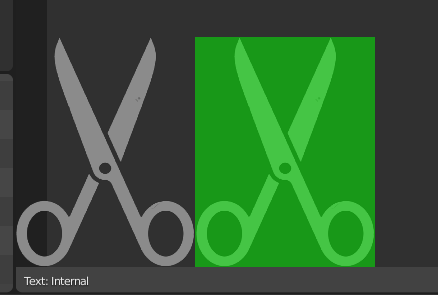How to draw point in bgl 2.8 (based on - https://developer.blender.org/D3688 - draw lines by mano-wii)
import bpy
import bgl
import blf
import gpu
import numpy as np
g_vertSrc = '''
uniform mat4 viewproj;
in vec3 pos;
void main()
{
gl_Position = viewproj * vec4(pos, 1.0);
}
'''
g_fragSrc = '''
uniform vec4 color;
out vec4 fragColor;
void main()
{
fragColor = color;
}
'''
g_plane_vertices = np.array([ ([0.5, 0.5, 0]),], [('pos', 'f4', 3)])
class SnapDrawn():
def __init__(self):
self._format = gpu.types.GPUVertFormat()
self._pos_id = self._format.attr_add(
id = "pos",
comp_type = "F32",
len = 3,
fetch_mode = "FLOAT")
self.shader = gpu.types.GPUShader(g_vertSrc, g_fragSrc)
self.unif_color = self.shader.uniform_from_name("color")
self.color = np.array([1.0, 0.8, 0.0, 0.5], 'f')
self.per_mat = self.shader.uniform_from_name("viewproj")
def batch_line_strip_create(self, coords):
global g_plane_vertices
vbo = gpu.types.GPUVertBuf(len = len(g_plane_vertices), format = self._format)
vbo.fill(id = self._pos_id, data = g_plane_vertices)
batch_lines = gpu.types.GPUBatch(type = "POINTS", buf = vbo)
#batch_lines.program_set_builtin(id = "2D_UNIFORM_COLOR")
batch_lines.program_set(self.shader)
return batch_lines
def draw(self, list_verts_co, rv3d):
batch = self.batch_line_strip_create(list_verts_co)
#batch.uniform_f32("color", 1.0, 0.8, 0.0, 0.5)
self.shader.uniform_vector_float(self.unif_color, self.color, 4)
viewproj = np.array(rv3d.perspective_matrix.transposed(), 'f')
self.shader.bind()
self.shader.uniform_vector_float(self.per_mat, viewproj, 16)
batch.draw()
del batch
def draw_callback_px(self, context):
print("mouse points", len(self.mouse_path))
font_id = 0 # XXX, need to find out how best to get this.
# draw some text
blf.position(font_id, 15, 30, 0)
blf.size(font_id, 20, 72)
blf.draw(font_id, "Hello Word " + str(len(self.mouse_path)))
# 50% alpha, 2 pixel width line
bgl.glEnable(bgl.GL_BLEND)
bgl.glLineWidth(2.0)
self.snap_draw.draw(self.mouse_path, self.rv3d)
#restore opengl defaults
bgl.glLineWidth(1)
bgl.glDisable(bgl.GL_BLEND)
class ModalDrawOperator(bpy.types.Operator):
"""Draw a line with the mouse"""
bl_idname = "view3d.modal_operator"
bl_label = "Simple Modal View3D Operator"
global_shader = None
unif_viewproj = -1
def modal(self, context, event):
context.area.tag_redraw()
if event.type == 'MOUSEMOVE':
self.mouse_path.append((event.mouse_region_x, event.mouse_region_y))
elif event.type == 'LEFTMOUSE':
del self.snap_draw
bpy.types.SpaceView3D.draw_handler_remove(self._handle, 'WINDOW')
return {'FINISHED'}
elif event.type in {'RIGHTMOUSE', 'ESC'}:
del self.snap_draw
bpy.types.SpaceView3D.draw_handler_remove(self._handle, 'WINDOW')
return {'CANCELLED'}
return {'PASS_THROUGH'}
def invoke(self, context, event):
if context.area.type == 'VIEW_3D':
self.rv3d = context.region_data
# the arguments we pass the the callback
args = (self, context)
# Add the region OpenGL drawing callback
# draw in view space with 'POST_VIEW' and 'PRE_VIEW'
self._handle = bpy.types.SpaceView3D.draw_handler_add(draw_callback_px, args, 'WINDOW', 'POST_PIXEL')
self.mouse_path = []
self.snap_draw = SnapDrawn()
context.window_manager.modal_handler_add(self)
return {'RUNNING_MODAL'}
else:
self.report({'WARNING'}, "View3D not found, cannot run operator")
return {'CANCELLED'}
def register():
bpy.utils.register_class(ModalDrawOperator)
def unregister():
bpy.utils.unregister_class(ModalDrawOperator)
if __name__ == "__main__":
register()




